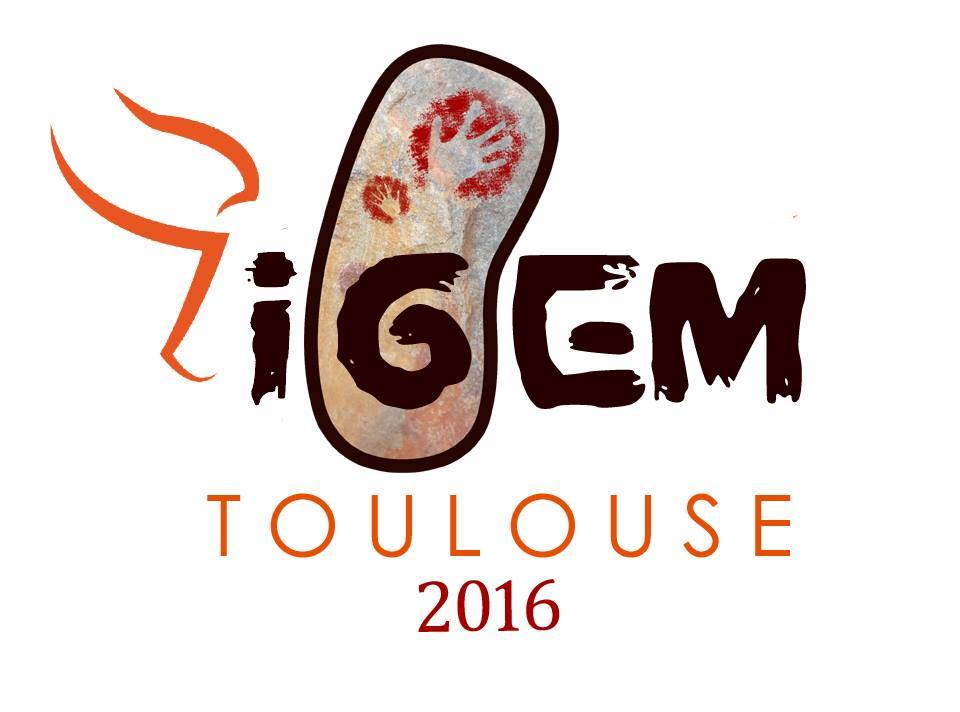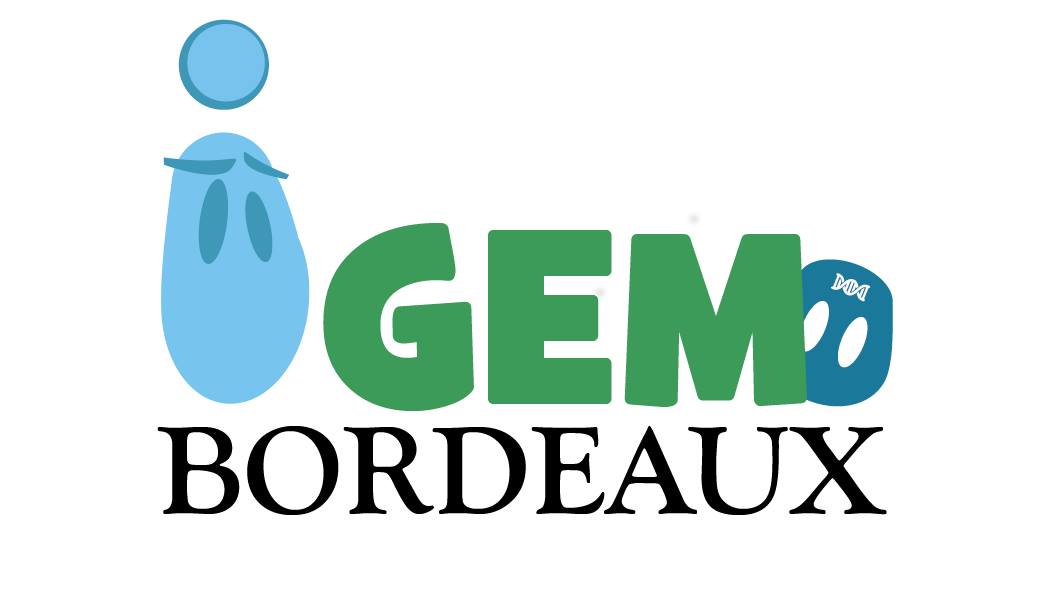(→Proposition: Adding contention) |
(→Proposition: Adding contention) |
||
| Line 179: | Line 179: | ||
</ul> | </ul> | ||
| − | + | This model of toxin anti-toxin interaction takes into account the bacteriostatic nature of most such toxins, | |
| − | + | and the presence of measurable <div lang="latex">IC_{50}</div> values. | |
| − | + | Clearly a more realsitic model would need to take into account cell volume, protein synthesis rates etc. | |
| − | + | Nevertheless, this simple model gives: | |
| + | |||
| + | <div lang="latex"> | ||
| + | \mu &= \mu_{0} \times e^{-\frac{[Toxin]}{IC_{50}}} \\ | ||
| + | [Toxin] &= max(0,\frac{k_1z_1-k_2z_2}{k_3}) \\ | ||
| + | \mu &= \mu_{0} \times min(1.0,e^{-k_a(z_1-k_bz_2)}) \\ | ||
| + | k_a &= \frac{k_1}{k_3 \times IC_{50}} \\ | ||
| + | k_b &= \frac{k_2}{k_1} | ||
| + | </div> | ||
| + | |||
| + | Incorporating 2 toxin anti toxin pairs, | ||
| + | if we assume that the production rate ratio is the same for both, <div lang="latex">k_b</div>, is independant of the system we have: | ||
| + | |||
| + | <div lang="latex">\mu = \mu_{0} \times min(1,e^{-k_a(z_1-k_bz_2)})) \times min(1,e^{-k_a(z_2-k_bz_1)}))</div> | ||
| + | |||
| + | where $\mu_0$ is given by equation 3. | ||
| + | For each toxin the efficiency parameter is a measure of ratio of toxin accumulation in cells with one gene copy and without anti-toxin to the <div lang="latex">IC_{50}</div>. | ||
</html> | </html> | ||
Collaborations
Our collaborations
Modeling for Toulouse 2016
Introduction
We conceived a model in order to handle questions concerning the following situation: A bacterial growth is carried out in a bioreactor, continually supplied in substrate. Bacteria can possess 2 type of plasmids:
- plasmids 1 carry the toxin A gene and the anti-toxin B gene
- plasmids 2 carry the toxin B gene and the anti-toxin A gene
So during the growth each bacterium can have no plasmids, either one type of plasmids, or both types.
The aim of the model is to assess the evolution of plasmids throughout the culture, to determine which parameters can matter in the loss of those plasmids, and to precise what are the probabilities for a bacteria to loose its plasmids during cell division. As a plasmids can be a disadvantage for growth (energy spent into replicating processes) or a advantage (protection against a toxin) this question is hard to answer. But in this situation, where one type of plasmid can influence on the presence of the other type of plasmid in (and reciprocally) in the same bacteria, the question become too tough to answer and only a mathematical model can resolve such a interrogation!
Equations
Development of the model
In 1967 Fredrickson et al. studied mathematically development of a bacterialpopulation, under the assumptions of a large population of independant bacteriain a well mixed solution of constant volume. The large population ensures thatfor the population the expectation value is a good estimate of the average.The bacteria being independant ensures that the behaviour of each individualdepends only on its internal state z and the conditions c which are the samefor all individuals. The volume is well mixed so the conditions c which are thesame everywhere. The volume is constant so that the population caracteristicscan be evaulated by integration over the volume.
From this starting point they develop a pair of master equations of change to describe the evolution of the population:
In these equations the various symbols are as follows:
\mathbf{z}
|
Vector for internal state of a bacteria. |
\mathbf{c}
|
Time dependant vector for conditions. |
W_\mathbf{z} (\mathbf{z},t)
|
Distribution of bacteria in z, t space. |
\overline{\mathbf{R}}(\mathbf{z},c)
|
The expected value or the reaction rate vector in z, t space. |
\sigma (\mathbf{z,c})
|
Rate of fision for bacteria in z, c space. |
p(\mathbf{z,z',c}))
|
Partitioning probability of generating a child in state z from a parent in state z'. |
\nabla_\mathbf{z}\cdot\mathbf{V}
|
\sum \frac{\partial}{\partial z_i}\mathbf{V}_i
|
\mathrm{d}v'
|
Integral over state space v' |
| D | Dilution rate of the culture (for femrenters). |
\beta
|
Stochiometric matrix for cellular substances. |
\gamma
|
Stochiometric matrix for extra-cellular substances. |
With these relations:
Thus for a particular problem in hand it is necessary to chose z and c that represent the state of cells and the media. Then the matrices and functions
For the problem in hand, plasmid maintenance during growth with 2 different plasmids, and attempting to find a simple solution to the problem we propose a 3 variable internal state vector:
In this internal state vector
For the rates of change of the internal state vector then we propose for the bacterial maturity to extend the development presented in Shene et al. [?] to include 2 plasmids and incorporate cell maturity as a state variable. This gives:
Here
This relation, and equivalent one for plasmid number 2
The inhibition constant reduces plasmid replication rate at slower growth rates. Notice that here we have directly defined
For the growth yield we propose :
Where alpha is the growth yield in
Here we assume that there is a fixed rate of division
In these equations we assume that the partitioning of the three internal state variables are independant. That cells divide exactly in half, that is the maturity parameter is exactly halved when the cells divide (
Substituting into the equations 1 and 2 we obtain:
Objectives
The aim of studying the behaviour of this model is to investigate how growth conditionsProposition: Adding contention
We need to introduce a modification to equation 3 (the state dependant growth rate) in which the equilibrium between
- item the genes produce toxin at a constant rate dependant on the number of copies k_1\times z_1,
- item the anti-toxin genes produce anti-toxin at a rate dependant on the number of copies k_2\times z_2,
- item anti-toxin instantly and irreversible kills the toxin in a stochiometric manner.
- item undestroyed toxin disappears at a constant rate, by dilution and other pathways k_3,
- item the concentration of toxin is at a dynamic steady state, i.e. the rates of production and disappearance are equal.
- item growth in inhibited in an exponential manner by free toxin with a characteristic IC_{50}.
Progamming code
Code de françois à ajouter
Results
METTRE LES COURBE
Data recovery Bordeaux 2016
In order to help the iGEM team Bordeaux, we had to read the paper « Dynamics of plasmid transfer on surfaces » and collect and organize some data about their experiments on plasmids transfer. Thanks to this, the iGEM team Bordeaux can compare those results to their own computaionnal results.
Colaboration made by Pretoria 2016
The iGEM team Pretoria 2016 hepled us focusing on the socio-economic and political issues facing the current platinum sector, including the Marikana strikes.
★ ALERT!
This page is used by the judges to evaluate your team for the <a href="https://2016.igem.org/Judging/Medals">team collaboration silver medal criterion</a>.
Delete this box in order to be evaluated for this medal. See more information at <a href="https://2016.igem.org/Judging/Evaluated_Pages/Instructions"> Instructions for Evaluated Pages </a>.
Sharing and collaboration are core values of iGEM. We encourage you to reach out and work with other teams on difficult problems that you can more easily solve together.
Which other teams can we work with?
You can work with any other team in the competition, including software, hardware, high school and other tracks. You can also work with non-iGEM research groups, but they do not count towards the iGEM team collaboration silver medal criterion.
In order to meet the silver medal criteria on helping another team, you must complete this page and detail the nature of your collaboration with another iGEM team.
Here are some suggestions for projects you could work on with other teams:
- Improve the function of another team's BioBrick Part or Device
- Characterize another team's part
- Debug a construct
- Model or simulating another team's system
- Test another team's software
- Help build and test another team's hardware project
- Mentor a high-school team




